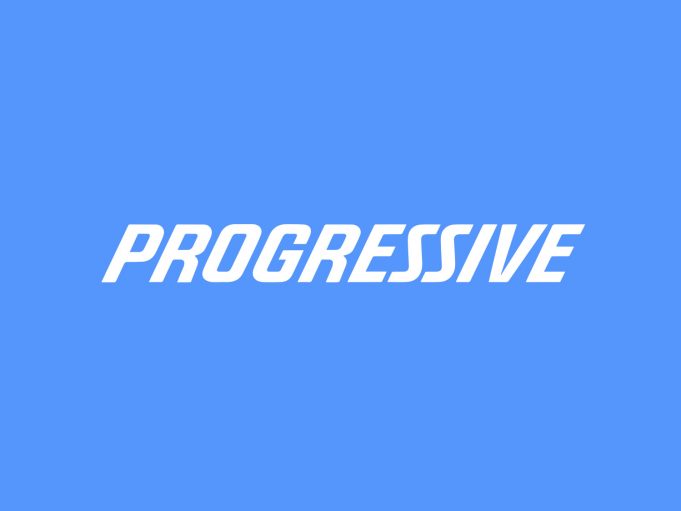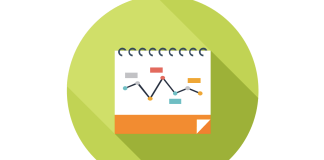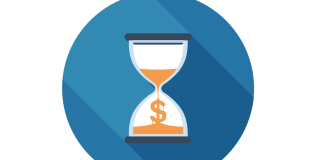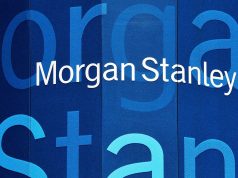This report provides the last five years revenues and revenue growth of Progressive Corp (PGR) from 2012 to 2016. Progressive generated a total of $23.4 billion revenues during 2016. Progressive reported a revenue growth of 12.4% year-over-year during 2016. The revenues and the revenue growth correspond to the fiscal year ending in December.
PROGRESSIVE REVENUES FROM 2012 TO 2016
Here are the revenues and the revenue growth details of Progressive during the last five years:
- Progressive generated a total of $17.1 billion revenues during 2012. Progressive reported a revenue growth of 8.3% year-over-year during 2012.
- Progressive generated a total of $18.2 billion revenues during 2013. Progressive reported a revenue growth of 6.4% year-over-year during 2013.
- Progressive generated a total of $19.4 billion revenues during 2014. Progressive reported a revenue growth of 6.7% year-over-year during 2014.
- Progressive generated a total of $20.9 billion revenues during 2015. Progressive reported a revenue growth of 7.5% year-over-year during 2015.
- Progressive generated a total of $23.4 billion revenues during 2016. Progressive reported a revenue growth of 12.4% year-over-year during 2016.

WHY ANALYZE REVENUE GROWTH?
Revenue growth is the most commonly analyzed financial metric. Revenue Growth is the percent increase (or decrease) of a company’s revenue between two time periods. It is computed by using the following formula: ((revenues during the time period two – revenues during the time period one) / revenues during the time period one)*100. If the time periods are two consecutive years, then the revenue growth is referred to as the annual revenue growth year-over-year. If the time periods are two consecutive quarters, then the revenue growth is referred to as the quarterly revenue growth quarter-over-quarter. If the time periods refer to the same quarter in the two consecutive years, then the revenue growth is referred to as quarterly revenue growth year-over-year. In case the time periods are two non-consecutive years, then the revenue CAGR (Commutative Annual Growth Rate) is computed.
Revenue growth analysis is important for a number of reasons. First, it helps in understanding how a business is performing. If the revenue growth rates are positive, it means the business is performing well and the revenues are increasing. If the revenue growth rates are negative, it means the revenues are declining and the company needs to take measures to increase them. If they don’t, the company will continue to shrink. Second, a company’s historical revenue growth analysis along with the market size and market share analysis helps in forecasting the future revenues of a company. Third, a comparison of a company’s growth rates with its competitors helps in determining who is winning more business. A revenue growth higher than the industry average translates into increasing market share. Companies with very high revenue growth rates have the potential to be the industry disrupters.
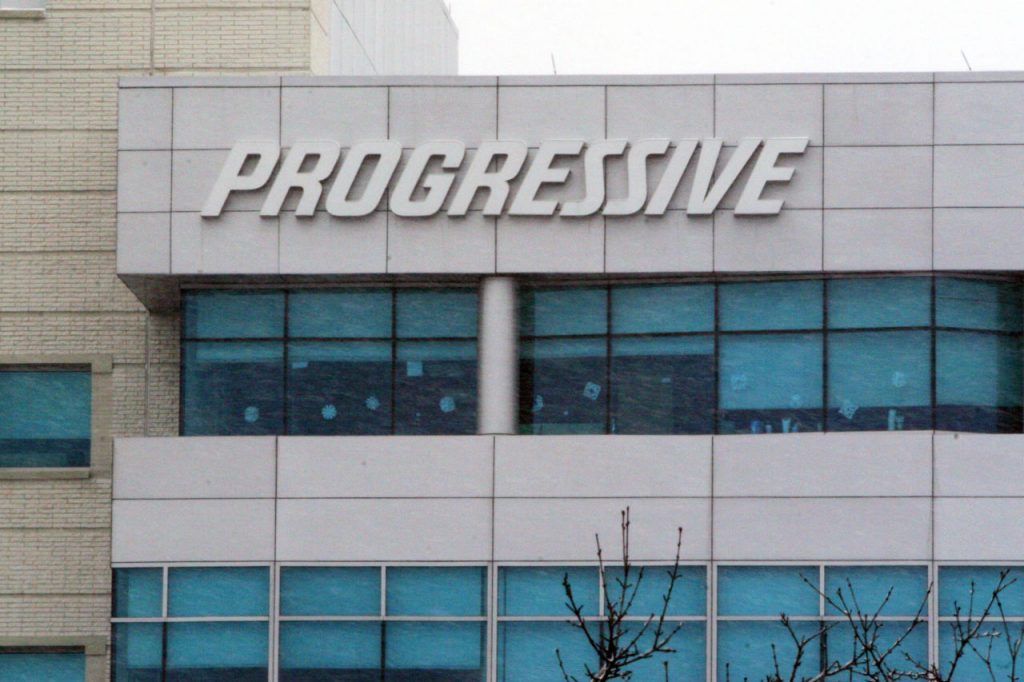
PROGRESSIVE RANKING
With $23.4 billion revenues, Progressive ranked number 117 in the R&P; Research list of top-3000 public companies in the US by revenues during 2016. Each one of the top-3000 companies generated more than $50 million of annual revenues during 2016.
The top-20 companies in the US by revenues during 2016 were:
- Walmart ($482.1 billion)
- ExxonMobil ($226.1 billion)
- Berkshire Hathaway ($223.6 billion)
- Apple ($215.6 billion)
- McKesson ($190.9 billion)
- UnitedHealth Group ($184.8 billion)
- CVS Health ($177.5 billion)
- General Motors ($166.4 billion)
- AT&T; ($163.8 billion)
- Ford Motor ($151.8 billion)
- AmerisourceBergen ($146.8 billion)
- Amazon ($136 billion)
- Verizon ($126 billion)
- General Electric ($123.7 billion)
- Cardinal Health ($121.5 billion)
- Costco ($118.7 billion)
- Walgreens Boots Alliance ($117.4 billion)
- Chevron ($114.5 billion)
- Kroger ($109.8 billion)
- Express Scripts Holding ($100.3 billion)
For the purpose of performance benchmarking of a company with a sector or industry average, R&P; Research associates every company with one sector and one industry. An industry consists of companies with related/similar business models. A sector comprises of a group of related/similar industries. For high-level analysis purposes, related/similar sectors are grouped into sector groups.

For example, Healthcare sector group is comprised of Life Sciences sector and Healthcare Services sector. Life Sciences sector is comprised of following industries: Pharmaceuticals; Medical Devices; Biotechnology; Diagnostics & Scientific Instruments. Healthcare Services sector is comprised of following industries: Medication Stores, PBM and Distributors; Healthcare Payers; Healthcare Providers; Medical Software; Healthcare Research Services.
Progressive is associated with Financials Sector Group, Insurance Sector and Property & Casualty Insurance Industry.
With $23.4 billion revenues, Progressive ranked number 15 of all the companies in the US Financials sector group. There were a total of 705 public companies in the US Financials sector group that had revenues greater than $50 million during 2016.
The top-10 companies in the US Financials sector group by revenues during 2016 were:
- Berkshire Hathaway ($223.6 billion)
- JPMorgan Chase ($95.7 billion)
- Wells Fargo ($84.5 billion)
- Bank of America ($83.7 billion)
- Citigroup ($69.9 billion)
- MetLife ($63.5 billion)
- Prudential Financial ($58.8 billion)
- AIG ($52.4 billion)
- Allstate ($36.5 billion)
- Morgan Stanley ($34.6 billion)
Financials sector group is comprised of the following sectors: Banking; Insurance; Financial Services; Real Estate & REITs.

With $23.4 billion revenues, Progressive ranked number 8 of all the companies in the US Insurance sector. There were a total of 101 public companies in the US Insurance sector that had revenues greater than $50 million during 2016.
The top-10 companies in the US Insurance sector by revenues during 2016 were:
- Berkshire Hathaway ($223.6 billion)
- MetLife ($63.5 billion)
- Prudential Financial ($58.8 billion)
- AIG ($52.4 billion)
- Allstate ($36.5 billion)
- Chubb ($31.5 billion)
- Travelers Companies ($27.6 billion)
- Progressive ($23.4 billion)
- Aflac ($22.6 billion)
- Hartford Financial Services Group ($18.3 billion)
Insurance sector is comprised of the following industries: Life Insurance; Property & Casualty Insurance; Surety & Title Insurance; Insurance Brokerage; Diversified Insurance. The definitions for each of the industries is as follows:
- Life Insurance industry includes companies engaged principally in life insurance.
- Property & Casualty Insurance industry includes companies engaged principally in accident, fire, automotive, marine, malpractice and other classes of non-life insurance.
- Surety & Title Insurance industry includes companies providing title & surety insurance.
- Insurance Brokerage industry includes insurance brokers and agencies.
- Diversified Insurance industry includes companies with life, health, property & casualty, and reinsurance interests, none of which predominates.
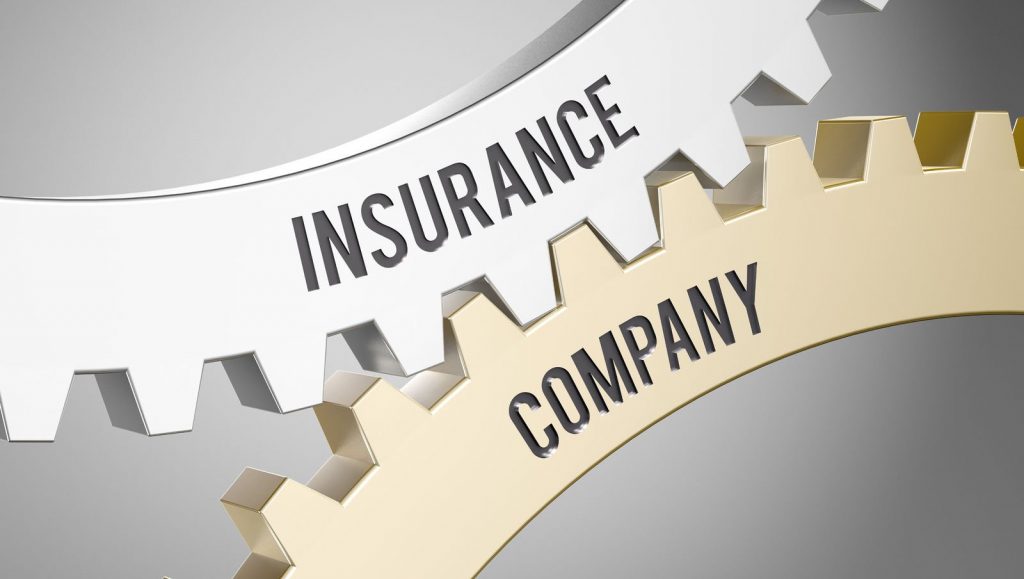
With $23.4 billion revenues, Progressive ranked number 6 of all the companies in the US Property & Casualty Insurance industry. There were a total of 66 public companies in the US Property & Casualty Insurance industry that had revenues greater than $50 million during 2016.
The top-10 companies in the US Property & Casualty Insurance industry by revenues during 2016 were:
- Berkshire Hathaway ($223.6 billion)
- AIG ($52.4 billion)
- Allstate ($36.5 billion)
- Chubb ($31.5 billion)
- Travelers Companies ($27.6 billion)
- Progressive ($23.4 billion)
- Hartford Financial Services Group ($18.3 billion)
- Loews ($13.1 billion)
- XL Group ($10.5 billion)
- CNA Financial ($9.4 billion)
COMPANIES SEGMENTATION
To identify and analyze high/low growth or most/least profitable similar-size companies in different sectors or industries, R&P; research classifies all companies into different segments based upon their revenues, revenue growth, and net profit margins.
Based upon their annual revenues, the companies are classified into one of the following four segments:
- Mega companies, having revenues greater than $50 billion.
- Very Large companies, having revenues between $10 billion and $50 billion.
- Large companies, having revenues between $1 billion and $10 billion.
- Mid-size companies, having revenues between $50 million and $1 billion.

With $23.4 billion revenues, Progressive was in the Very Large companies revenue segment during 2016. There were a total of 239 companies in the Very Large companies revenue segment during 2016.
Based upon their annual revenue growth, the companies are classified into one of the following eight segments:
- Very High positive growth companies, having annual revenue growth greater than 50%.
- High positive growth companies, having annual revenue growth between 20% and 50%.
- Medium positive growth companies, having annual revenue growth between 5% and 20%.
- Low positive growth companies, having annual revenue growth between 0% and 5%.
- Low negative growth companies, having annual revenue growth between -5% and 0%.
- Medium negative growth companies, having annual revenue growth between -20% and -5%.
- High negative growth companies, having annual revenue growth between -50% and -20%.
- Very High negative growth companies, having annual revenue growth less than -50%.
With 12.4% revenue growth year-over-year, Progressive was in the Medium positive revenue growth segment during 2016. There were a total of 876 companies in the Medium positive revenue growth segment during 2016. Of the US top-3000 companies, 1985 (nearly two-third of the total) had positive revenue growth and 1015 (nearly one-third of the total) had negative revenue growth during 2016.
Based upon their annual net profit margin, the companies are classified into one of the following eight segments:
- Very High positive margin companies, having net profit margin greater than 50%.
- High positive margin companies, having net profit margin between 20% and 50%.
- Medium positive margin companies, having net profit margin between 5% and 20%.
- Low positive margin companies, having net profit margin between 0% and 5%.
- Low negative margin companies, having net profit margin between -5% and 0%.
- Medium negative margin companies, having net profit margin between -20% and -5%.
- High negative margin companies, having net profit margin between -50% and -20%.
- Very High negative margin companies, having net profit margin less than -50%.

With a net margin of 4.4%, Progressive was in the Low positive net profit margin segment during 2016. There were a total of 707 companies in the Low positive net profit margin segment during 2016. Of the US top-3000 companies, 2244 (nearly three-fourth of the total) had positive net profit margin and 756 (nearly one-fourth of the total) had negative net profit margin during 2016.
COMPANY BUSINESS SUMMARY
The Progressive Corporation, through its subsidiaries, provides personal and commercial property-casualty insurance, and other specialty property-casualty insurance and related services primarily in the United States. Its Personal Lines segment writes insurance for personal autos, and recreational and other vehicles. This segment’s products include personal auto insurance; and special lines products, including insurance for motorcycles, ATVs, RVs, mobile homes, watercraft, and snowmobiles. The company’s Commercial Lines segment provides primary liability, physical damage, and other auto-related insurance for autos, vans, and pick-up trucks, and dump trucks used by small businesses; tractors, trailers, and straight trucks primarily used by regional general freight and expeditor-type businesses, and non-fleet long-haul operators; dump trucks, log trucks, and garbage trucks used by dirt, sand and gravel, logging, and coal-type businesses; tow trucks and wreckers used in towing services and gas/service station businesses; and non-fleet taxis, black-car services, and airport taxis. Its Property segment provides residential property insurance for homeowners, other property owners, and renters, as well as offers personal umbrella insurance, and primary and excess flood insurance. The company also offers policy issuance and claims adjusting services; home, condominium, renters, and other insurance; and general liability and business owners policies, and workers’ compensation insurance, as well as sells personal auto physical damage and auto property damage liability insurance in Australia. In addition, it offers reinsurance services. The Progressive Corporation sells its products and services through independent insurance agencies, as well as directly on Internet, and mobile devices, and over the phone. The company was founded in 1937 and is headquartered in Mayfield Village, Ohio.

DATA SOURCE
The chart and the data on this page are sourced from the R&P; Research Industry Intelligence Platform. The platform provides the key financial metrics for all the public companies in the United States. The platform empowers users to compare last five or 15 years financial data of a company with the other companies or the industry averages. This benchmarking exercise yields powerful insights that can drive better business decisions.
INDUSTRY PEERS AND COMPETITORS OF PROGRESSIVE
Allstate (ALL) Business Analysis – Analyze Historical Performance, Strategic Priorities, And…
Allstate Corp with $37 billion revenues in the year 2016 was the number 3 Property & Casualty Insurance company. Read this report to know the top competitors of Allstate and identify growth and cost optimization opportunities of Allstate
Chubb (CB) Business Analysis – Analyze Historical Performance, Strategic Priorities, And…
Chubb Ltd with $31 billion revenues in the year 2016 was the number 4 Property & Casualty Insurance company. Read this report to know the top competitors of Chubb and identify growth and cost optimization opportunities of Chubb
Travelers Companies (TRV) Business Analysis – Analyze Historical Performance, Strategic Priorities,…
Travelers Companies, Inc. with $28 billion revenues in the year 2016 was the number 5 Property & Casualty Insurance company. Read this report to know the top competitors of Travelers Companies and identify growth and cost optimization opportunities of Travelers Companies
Hartford Financial Services Group (HIG) Business Analysis – Analyze Historical Performance,…
Hartford Financial Services Group Inc with $18 billion revenues in the year 2016 was the number 7 Property & Casualty Insurance company. Read this report to know the top competitors of Hartford Financial Services Group and identify growth and cost optimization opportunities of Hartford Financial Services Group
Loews (L) Business Analysis – Analyze Historical Performance, Strategic Priorities, And…
Loews Corp with $13 billion revenues in the year 2016 was the number 8 Property & Casualty Insurance company. Read this report to know the top competitors of Loews and identify growth and cost optimization opportunities of Loews
XL Group (XL) Business Analysis – Analyze Historical Performance, Strategic Priorities,…
XL Group Ltd with $11 billion revenues in the year 2016 was the number 9 Property & Casualty Insurance company. Read this report to know the top competitors of XL Group and identify growth and cost optimization opportunities of XL Group
REVENUES ANALYSIS
Progressive (PGR) Revenues And Revenue Growth From 2012 To 2016
This report provides the last five years revenues and revenue growth of Progressive Corp (PGR) from 2012 to 2016. Progressive generated a total of $23.4 billion revenues during 2016. Progressive reported a revenue growth of 12.4% year-over-year during 2016. The revenues and the revenue growth correspond to the fiscal year ending in December.
Progressive (PGR) Revenues And Revenue Growth From 2002 To 2016
This report provides the last fifteen years revenues and revenue growth of Progressive Corp (PGR) from 2002 to 2016. Progressive generated a total of $23.4 billion revenues during 2016. Progressive reported a revenue growth of 12.4% year-over-year during 2016. The revenues and the revenue growth correspond to the fiscal year ending in December.
Progressive (PGR) Revenue Growth Comparison With Industry Growth From 2012 To…
This report provides a comparison of Progressive Corp (PGR) revenue growth with Property & Casualty Insurance industry growth during the last five years from 2012 to 2016. Progressive reported a revenue growth of 12.4% year-over-year during 2016. The Property & Casualty Insurance industry growth was 6.6% year-over-year during 2016. Progressive growth was faster than the industry during 2016.
PROFIT ANALYSIS
Progressive (PGR) Net Profit And Net Margin From 2012 To 2016
This report provides the last five years net profit and net margin of Progressive Corp (PGR) from 2012 to 2016. Progressive reported a total net income of $1 billion during 2016. Progressive generated a total of $23.4 billion revenues during 2016. Progressive net profit margin was 4.4% during 2016. The net profit and the net profit margin correspond to the fiscal year ending in December.
Progressive (PGR) Net Profit And Net Margin From 2002 To 2016
This report provides the last fifteen years net profit and net margin of Progressive Corp (PGR) from 2002 to 2016. Progressive reported a total net income of $1 billion during 2016. Progressive generated a total of $23.4 billion revenues during 2016. Progressive net profit margin was 4.4% during 2016. The net profit and the net profit margin correspond to the fiscal year ending in December.
Progressive (PGR) Net Profit Margin Comparison With Industry From 2012 To…
This report provides a comparison of Progressive Corp (PGR) net profit margin with Property & Casualty Insurance industry net profit margin during the last five years from 2012 to 2016. Progressive reported a net profit margin of 4.4% during 2016. The Property & Casualty Insurance industry net profit margin was 8.2% during 2016. Progressive was less profitable than the industry during 2016.
COST & EXPENSES ANALYSIS
Progressive (PGR) Cost of Sales (COGS) Analysis From 2012 To 2016
This report provides the last five years cost of sales (COGS) analysis of Progressive Corp (PGR) from 2012 to 2016. Progressive spent a total of $16.9 billion on COGS during 2016. Progressive generated a total of $23.4 billion revenues during 2016. As a percentage of revenues, Progressive spent 72% of its total revenues on COGS during 2016. The cost of sales (COGS) numbers are for the fiscal year ending in December.
Progressive (PGR) Research & Development (R&D) Spending Analysis 2016
R&D; spending analysis for Progressive is not available because either the company does not provide the data or we don’t have it.
Progressive (PGR) Sales, Marketing, General & Administrative (SG&A) Spending Analysis From…
This report provides the last five years sales, marketing, general & administrative (SG&A;) expenses of Progressive Corp (PGR) from 2012 to 2016. Progressive spent a total of $4.8 billion on sales, marketing, general, and administrative (SG&A;) activities during 2016. Progressive generated a total of $23.4 billion revenues during 2016. As a percentage of revenues, Progressive spent 20.6% of its total revenues on SG&A; activities during 2016. The SG&A; spending numbers are for the fiscal year ending in December.
WORKING CAPITAL ANALYSIS
Progressive (PGR) Inventory Spending Analysis 2016
Inventory spending analysis for Progressive is not available because either the company does not provide the data or we don’t have it.
Progressive (PGR) Accounts Receivable (A/R) Analysis From 2012 To 2016
This report provides the last five years Accounts Receivable (A/R) analysis of Progressive Corp (PGR) from 2012 to 2016. Progressive invested a total of $4.7 billion on accounts receivable during 2016. Progressive generated a total of $23.4 billion revenues during 2016. As a percentage of revenues, Progressive invested 20% of its total revenues on accounts receivable during 2016. The accounts receivable numbers are for the fiscal year ending in December.
Progressive (PGR) Accounts Payable (A/P) Analysis From 2012 To 2016
This report provides the last five years Accounts Payable (A/P) analysis of Progressive Corp (PGR) from 2012 to 2016. Progressive invested a total of $2.9 billion on accounts payable during 2016. Progressive generated a total of $23.4 billion revenues during 2016. As a percentage of revenues, Progressive invested 12.3% of its total revenues on accounts payable activities during 2016. The accounts payable numbers are for the fiscal year ending in December.
ASSET MANAGEMENT ANALYSIS
Progressive (PGR) Property, Plant & Equipment (PP&E) Investment Analysis From 2012…
This report provides the last five years property, plant & equipment (PP&E;) investment analysis of Progressive Corp (PGR) from 2012 to 2016. Progressive invested a total of $1.2 billion on property, plant & equipment (PP&E;) activities during 2016. Progressive generated a total of $23.4 billion revenues during 2016. As a percentage of revenues, Progressive invested 5% of its total revenues on PP&E; activities during 2016. The PP&E; investment numbers are for the fiscal year ending in December.
Progressive (PGR) Intangible Assets Analysis From 2015 To 2016
This report provides the last two years Intangible assets analysis of Progressive Corp (PGR) from 2015 to 2016. Progressive invested a total of $882.2 million on Intangible assets during 2016. Progressive generated a total of $23.4 billion revenues during 2016. As a percentage of revenues, Progressive invested 3.8% of its total revenues on intangible assets during 2016. The Intangible asset numbers are for the fiscal year ending in December.

